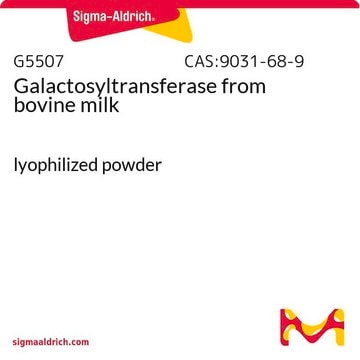I3021
IGEPAL® CA-630
viscous liquid
Synonim(y):
Octylphenoxy poly(ethyleneoxy)ethanol, branched
About This Item
Polecane produkty
opis
non-ionic
Poziom jakości
Postać
viscous liquid
masa cząsteczkowa
~603
CMC
0.08 mM (20-25°C)
lepkość
250-350 cP, neat(25 °C)(lit.)
gęstość
1.06 g/cm3 at 25 °C (lit.)
HLB
13
InChI
1S/C16H26O2/c1-15(2,3)12-16(4,5)13-6-8-14(9-7-13)18-11-10-17/h6-9,17H,10-12H2,1-5H3
Klucz InChI
JYCQQPHGFMYQCF-UHFFFAOYSA-N
Szukasz podobnych produktów? Odwiedź Przewodnik dotyczący porównywania produktów
Powiązane kategorie
Opis ogólny
Zastosowanie
- as a component of grinding buffer along with lithium dodecyl sulphate, tris-HCl, EDTA, NaCl, sodium deoxycholate, dithiothreitol and thiourea in RNA extraction process
- along with Tris- HCl in incubation of Tachyzoites cultured in vero cells
- as a component of nuclear extract buffer D+ containing HEPES, glycerol, KCl and EDTA for gel shift analysis
- as a component of PI buffer along with NaH2PO4 to wash slides in FISH (fluorescence in situ hybridization) procedure
- for solubilizing and isolation of membrane proteins
Inne uwagi
Jakość
Przestroga
Informacje prawne
Hasło ostrzegawcze
Danger
Zwroty wskazujące rodzaj zagrożenia
Zwroty wskazujące środki ostrożności
Klasyfikacja zagrożeń
Acute Tox. 4 Oral - Aquatic Acute 1 - Aquatic Chronic 1 - Eye Dam. 1 - Skin Irrit. 2
Kod klasy składowania
10 - Combustible liquids
Klasa zagrożenia wodnego (WGK)
WGK 2
Temperatura zapłonu (°F)
483.8 °F - closed cup
Temperatura zapłonu (°C)
251 °C - closed cup
Środki ochrony indywidualnej
Eyeshields, Gloves, type ABEK (EN14387) respirator filter
Choose from one of the most recent versions:
Masz już ten produkt?
Dokumenty związane z niedawno zakupionymi produktami zostały zamieszczone w Bibliotece dokumentów.
Protokoły
This page shows how to solubilize membrane proteins with products from Cytiva.
Na tej stronie przedstawiono sposób solubilizacji białek błonowych za pomocą produktów firmy Cytiva.
Nasz zespół naukowców ma doświadczenie we wszystkich obszarach badań, w tym w naukach przyrodniczych, materiałoznawstwie, syntezie chemicznej, chromatografii, analityce i wielu innych dziedzinach.
Skontaktuj się z zespołem ds. pomocy technicznej









